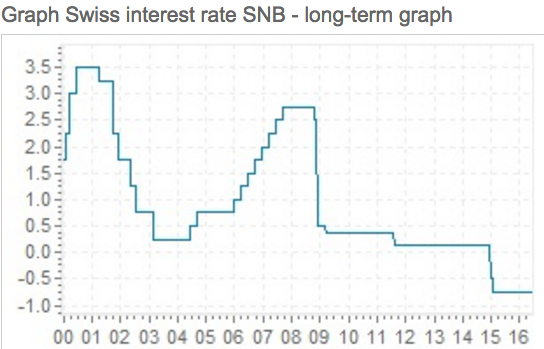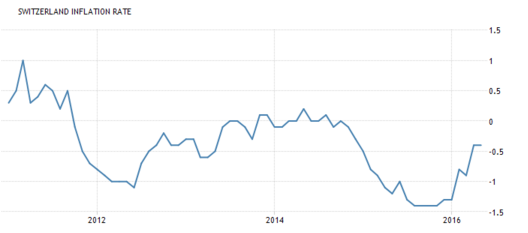Trump: Even worse than we thought
Over the past year, I’ve been stunned to discover that Trump seems to have absolutely no redeeming qualities. Even Nixon was intelligent. Herbert Hoover was a highly competent manager. Trump seems to be bad in just about every way a person can be judged:
1. Pathological liar.
2. Utterly ignorant of policy issues.
3. Wrong on most policy issues.
3. Bigoted and sexist.
4. Highly vindictive.
5. Distrusts expertise.
6. Obnoxious personality.
7. Has no taste.
Now we find that things are even worse than we imagined. Surely a New York businessman who made lots of money in real estate must at least be a good manager. Nope, he’s perhaps the worst manager ever to run for President of the United States. Here’s The Economist:
THROUGHOUT the presidential primary contest, Donald Trump’s claim to be self-funding his campaign always drew loud cheers. Part boast—“I’m like, really rich” he would smirk—and part a badge of incorruptibility, the claim allowed the property developer to paint all his Republican rivals as puppets of special interests. Voters at campaign rallies would reliably cite his supposedly vast wealth, and the independence it brought, as one of their biggest reasons for trusting the businessman.
Loyal Trump supporters forgave their champion when he secured the nomination and abruptly changed his tune, boasting in early May that he would create a “world-class finance organisation” to solicit donors and fill war chests for himself and for the Republican Party. The same Trump loyalists will doubtless shrug off headlines that greeted the release of campaign-finance reports for the month of May, showing that he raised just $3.1m from donors and has just $1.3m cash on hand—sums dwarfed by Mrs Clinton’s campaign, which raised over $26m in May and started June with $42.5m in cash on hand. Mr Trump himself sounded defiant, asserting that he could spend “unlimited” sums of his own money if needs be.
That’s a mindbogglingly poor performance for a Presidential candidate, it’s what you’d expect of a Congressional candidate. And a substantial portion of the funds raised are used not to promote his campaign, but rather to enrich his own businesses, such as “Mar-a-Lago”:
So he’s also corrupt. Fundraising is one of the first cases where we’ve been able to judge Trump’s ability to get things done. And he failed miserably. In retrospect, this should not have been a surprise. Contrary to widespread opinion, Trump has not had a successful business career, rather he’s been really lucky. First he inherited $40 million from his dad, back in the 1970s. If he’d just put the money into an index fund he would have done about as well as he’s actually done. (We don’t know exactly how rich he is, and he won’t provide adequate documentation.)
But it’s even worse than that. In the 1970s, the New York economy was a mess, and most people were very pessimistic about the city’s future. In the decades since, New York has boomed and its property market has done far better than anyone dreamed possible during the 1970s. An aggressive property speculator with a fortune to work with, and a willingness to be so leveraged that his businesses would endure occasional bankruptcies, should have massively outperformed the S&P500 during New York’s boom years. He should be “really, really rich”, but he isn’t. Which is why he’s raising money from suckers and using the funds to augment his personal wealth.
In Scotland, we saw another example of his appalling incompetence. He claims to be the sort of nationalist that will “put America first” but he doesn’t even know how to do that:
Had he been in touch with his foreign policy advisers about the Brexit vote and its impact on the United States? “I speak to foreign policy advisers all the time. But the advice has to come from me,” Trump said. But, he added, what good were foreign policy advisers anyway? “What have these policy advisers done for us? Other than get big fees? It’s an embarrassment. The whole world is a mess. These people don’t have it. Honestly, most of them are no good.”
When informed that this vote had caused a sharp drop in global asset prices, he denied the obvious:
Though his staff had said he just wanted to talk golf, Trump quickly disregarded that edict, reaffirming his praise for the British vote to exit the European Union. Asked about the turmoil it has caused in the global financial markets, Trump replied that it was “too bad” but downplayed the role the so-called Brexit decision had played in riling the American stock market. He suggested there were larger factors involved. “A lot of bad decisions, a lot of bad things happening in this world,” Trump said.
Repeatedly pressed on what he would say to Americans worried about their retirement accounts, Trump straightened his white “Make America Great Again” hat, which had come loose atop his head. “Americans are very much different. This shouldn’t even affect them,” he replied.
Yes, that’s right. There are lots of “bad things” happening in the world, which cause the S&P500 futures to plunge by more than 5% during a few minutes very late on a Thursday evening, at the exact same moment as the Betfair probability of Brexit suddenly soared from low numbers to near 100%. Trump doesn’t need “experts” to tell him how the UK decision will damage the retirement accounts of Americans (like me), he already knows all this by himself. He’s an expert on Brexit, despite the fact that he had no view on the issue just a few weeks earlier:
Trump’s not even a competent nationalist. When there is a conflict between the best interests of the US, and the nationalist faction of another country, he sides with the other country. Trump certainly won’t make America’s retirement accounts great again, unless he starts standing up for America’s interests, not the Brits. At least Obama stood up for the USA.
Even more ridiculous, he thought the Scots voted for Brexit:
Just arrived in Scotland. Place is going wild over the vote. They took their country back, just like we will take America back. No games!
Earth to Trump, Scotland voted 62% against Brexit, and may well leave the UK due to this decision, which means Britain will no longer be “Great”. What does he think about that?




